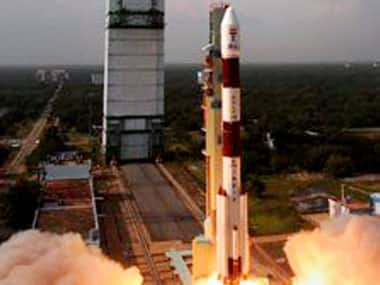Indian space agency officials are gearing up to raise the orbit of Mars Orbiter launched into the earth parking orbit Tuesday afternoon, said a senior official. “Early tomorrow (Thursday) at 1.17 a.m. the on-board motors of Mars Orbiter will be fired for around 200 seconds to raise its orbit by around 4,120 km to 28,785 km,” S Arunan, project director, Mars Orbiter Mission told IANS over phone from Bangalore. [caption id=“attachment_1214551” align=“alignleft” width=“380”]
 Mangalyaan blasting off from Sriharikota yesterday: PTI[/caption] “Today morning (Wednesday) we carried out the rehearsal for the orbit raising activities without switching on the motor,” he added. According to him, around 40 kg of the on-board fuel was expected to be burnt in the first orbit raising activity slated for Thursday. “We will do six orbit raising activities and the final and most important one will be the sixth one to push the Mars Orbiter towards the red planet,” Arunan said. The 1,340 kg Mars Orbiter, developed by the Indian Space Research Organisation (Isro) at an outlay of around Rs.150 crore, carries 852 kg of fuel on-board. According to Arunan, around 360 kg fuel was likely to be expended on the six orbit raising activities. He said the Mars Orbiter’s orbit would be raised on 7,10, 15 and 30 of November. Arunan said the design life of the Mars Orbiter was six months. The Orbiter’s life depends on the environmental conditions on Mars. “The fuel requirement in the Mars orbit is not much. The Orbiter needs only two kg fuel for six months,” he said. He said there are three Mars satellites (two by the US and one by European Space Agency) in orbit and they have outlived their design life. IANS
Mangalyaan blasting off from Sriharikota yesterday: PTI[/caption] “Today morning (Wednesday) we carried out the rehearsal for the orbit raising activities without switching on the motor,” he added. According to him, around 40 kg of the on-board fuel was expected to be burnt in the first orbit raising activity slated for Thursday. “We will do six orbit raising activities and the final and most important one will be the sixth one to push the Mars Orbiter towards the red planet,” Arunan said. The 1,340 kg Mars Orbiter, developed by the Indian Space Research Organisation (Isro) at an outlay of around Rs.150 crore, carries 852 kg of fuel on-board. According to Arunan, around 360 kg fuel was likely to be expended on the six orbit raising activities. He said the Mars Orbiter’s orbit would be raised on 7,10, 15 and 30 of November. Arunan said the design life of the Mars Orbiter was six months. The Orbiter’s life depends on the environmental conditions on Mars. “The fuel requirement in the Mars orbit is not much. The Orbiter needs only two kg fuel for six months,” he said. He said there are three Mars satellites (two by the US and one by European Space Agency) in orbit and they have outlived their design life. IANS
Mars mission: Isro to raise Mangalyaan orbit to 28,485 km tomorrow
FP Archives
• November 6, 2013, 18:03:52 IST
“We will do six orbit raising activities and the final and most important one will be the sixth one to push the Mars Orbiter towards the red planet”, an Isro official said.
Advertisement
)